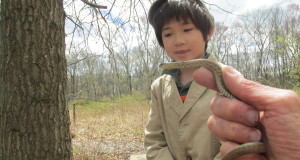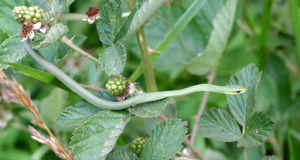Frogs are full of surprises when it comes to reproduction – there are species that incubate eggs below the skin of their backs and in the vocal sacs, while others carry them wrapped about their rear legs or construct foam nests on land. But in May of this year Boston University biologists working in Panama uncovered what may well be the oddest reproductive strategy of all – a frog that actively chooses to lay its eggs on either land or in water, depending upon the threats presented by each habitat. To date this is the only example of an egg that can hatch in either environment, and these frogs are the only vertebrates known to show such reproductive flexibility.
When breeding near shaded ponds, hourglass frogs lay their eggs on tree leaves overhanging the water (the tadpoles drop into the water upon hatching), thus avoiding fish and other aquatic predators. However, when utilizing ponds exposed to the sun, the majority of the frogs lay their eggs directly in the water, lest they dry out before hatching.
The “decision” is not governed genetically, because the same female frog will choose different egg laying sites when placed in a shaded or un-shaded pond.
Amphibians were the first group of vertebrates to evolve some independence from water. Biologists are now studying the hourglass frog to determine if its unique egg-laying flexibility might shed light on the evolution of terrestrial amphibian eggs.
You can read more about the hourglass treefrog and its relatives at:
http://research.amnh.org/herpetology/amphibia/references.php?id=10041
 That Reptile Blog – Reptile, Amphibian and Exotic Pet Care and Information
That Reptile Blog – Reptile, Amphibian and Exotic Pet Care and Information



One comment
Pingback: Recent Links Tagged With "treefrog" - JabberTags